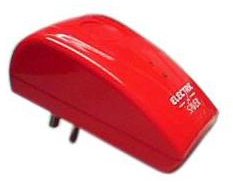House hold Power Saving Device: Power Saver Devices for Home
Introduction
A House hold power saving device is generally used in residential homes to save energy and to reduce electricity bills. Electricity fluctuation is a common phenomenon in every household, and the power savers work on reducing this current fluctuation and increasing the energy efficiency.
There are several types of power saving devices available in the market today. These household power saving devices have recently received a lot of attention from both consumers and manufacturers. The power saver is a small device which is to be plugged in any of the AC sockets in the house. Moreover, some of the companies claim that their power savers save up to 40% of the energy. So how true are these claims? Let’s learn more about household power saving devices by understanding how they work.
How Does Power Saver Works?
It is known that the electricity that comes to our homes is not stable in nature. There are many fluctuations, ups and downs, and surges in this current. This unstable current cannot be used by any of the household appliances. Moreover, the fluctuating current wastes the electric current from the circuit by converting electrical energy into heat energy. This heat energy not only gets wasted to the atmosphere, but also harms the appliances and wiring circuit.
Power savers work on the principle of surge protection technology. Power savers work on straightening this unstable electric current to provide a smooth and constant output. The fluctuation in voltage is unpredictable and cannot be controlled. However, the power savers utilize current fluctuation to provide a usable power by acting like a filter and allowing only smooth current to pass through the circuit. Power savers use capacitors for this purpose. When there is a surge of current in the circuit, the capacitor of the power saver stores the excess current and releases it when there is a sudden drop. Thus only smooth output current comes out of the device.
Moreover, a power saver also removes any type of carbon in the system, which facilitates further smoother flow. The main advantage of power savers is not that they provide a backup system in times of low current, but that it protects the household appliances. It is known that a sudden rise in the power can destroy the electrical appliance. Thus, the power saver not only protects the appliance but also increases its life. Moreover, they also reduce the energy consumption and thus the electricity bills.
The amount of power saved by a power saver depends on the number of appliances on the circuit. Also, the system takes at least a week to adapt itself fully to the circuit, before it starts showing its peak performance. The maximum amount of voltage savings will be seen in areas wherein the current fluctuation is the highest.

Is it Worth Buying a Power Saver?
Though household power saver provides several advantages, many people believe that the claims made by the power saver manufacturing companies are false. Almost all people who buy power savers do it to reduce their electricity bills. Many people who have used these power savers said that they could reduce their electricity bills with the devices; however the reduction was not as much as they had expected. Moreover, they couldn’t figure out if the reduction in electricity bills was due to the power savers or because of their efforts to reduce their electrical usage.
With hundreds of power saver products available in the market today, it gets difficult to assess which is the best for usage. Many of these manufactures provide a 30 days money return scheme for the unsatisfied customers. It is recommended that people go for such schemes as it would not risk the money invested. However, experts believe that many power savers take more than 30 days to get adaptable to the circuit and to show their peak performance. Thus, it sometimes becomes difficult to choose the right kind of power saver for your needs.
But there can be ways to check if the power saver is working for you or not. You can ask an electrician to check the power in the circuit using a wattmeter, before and after the device is switched on. However, there is no guarantee that there will be power saving even if the wattmeter shows positive results. This is because power savers don’t work well with heavy loads such as air conditioners, geysers, heaters etc. Thus, buying a power saver involves risking money; however it is at least worth to try out the device with the 30 days money back scheme.
References
image credits
